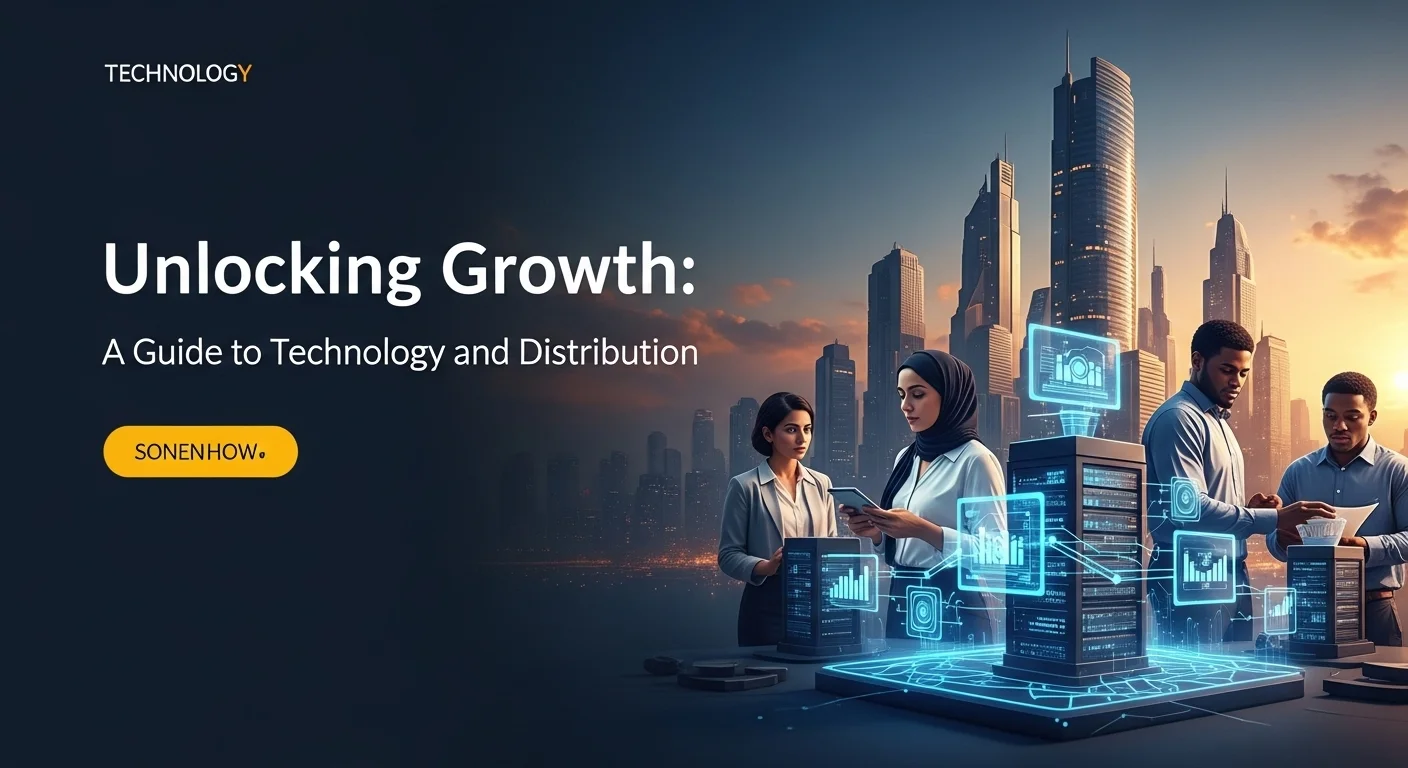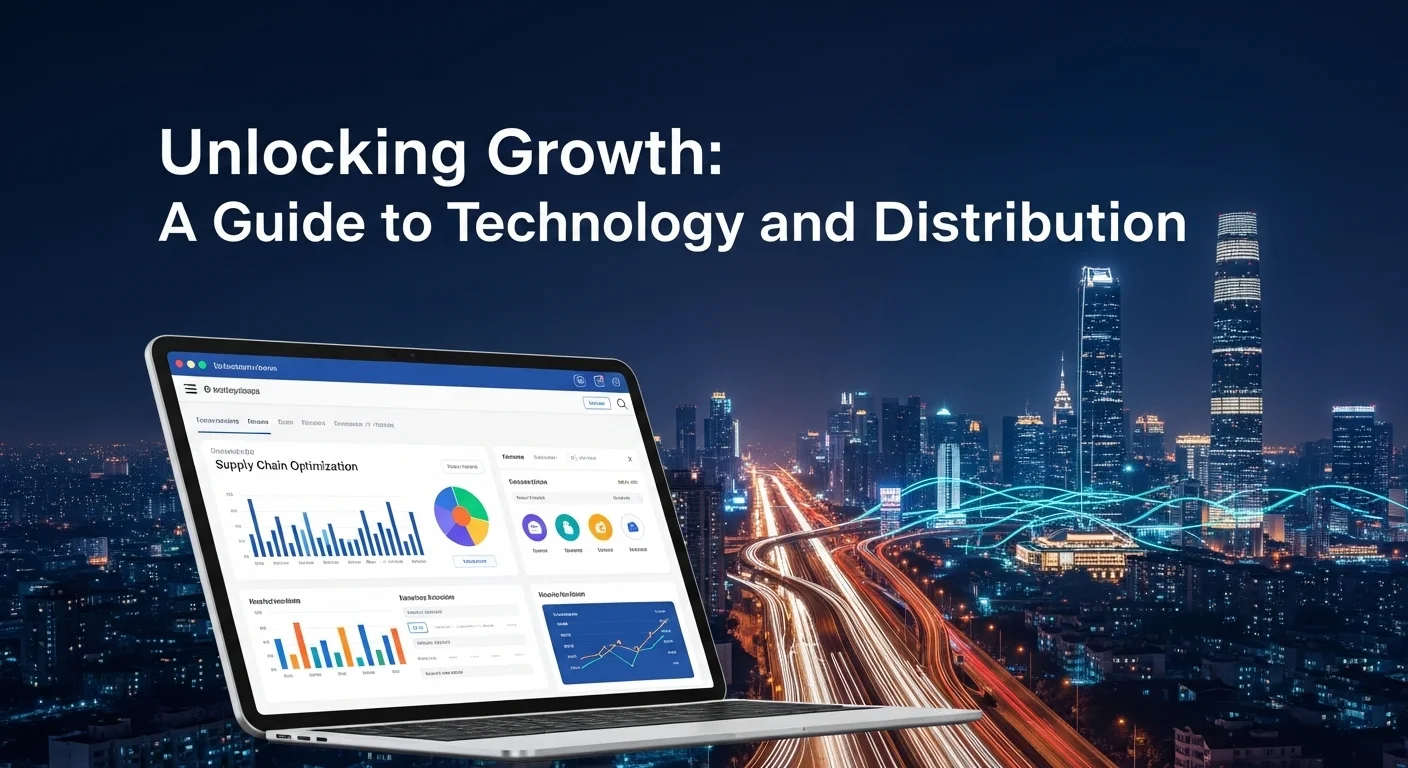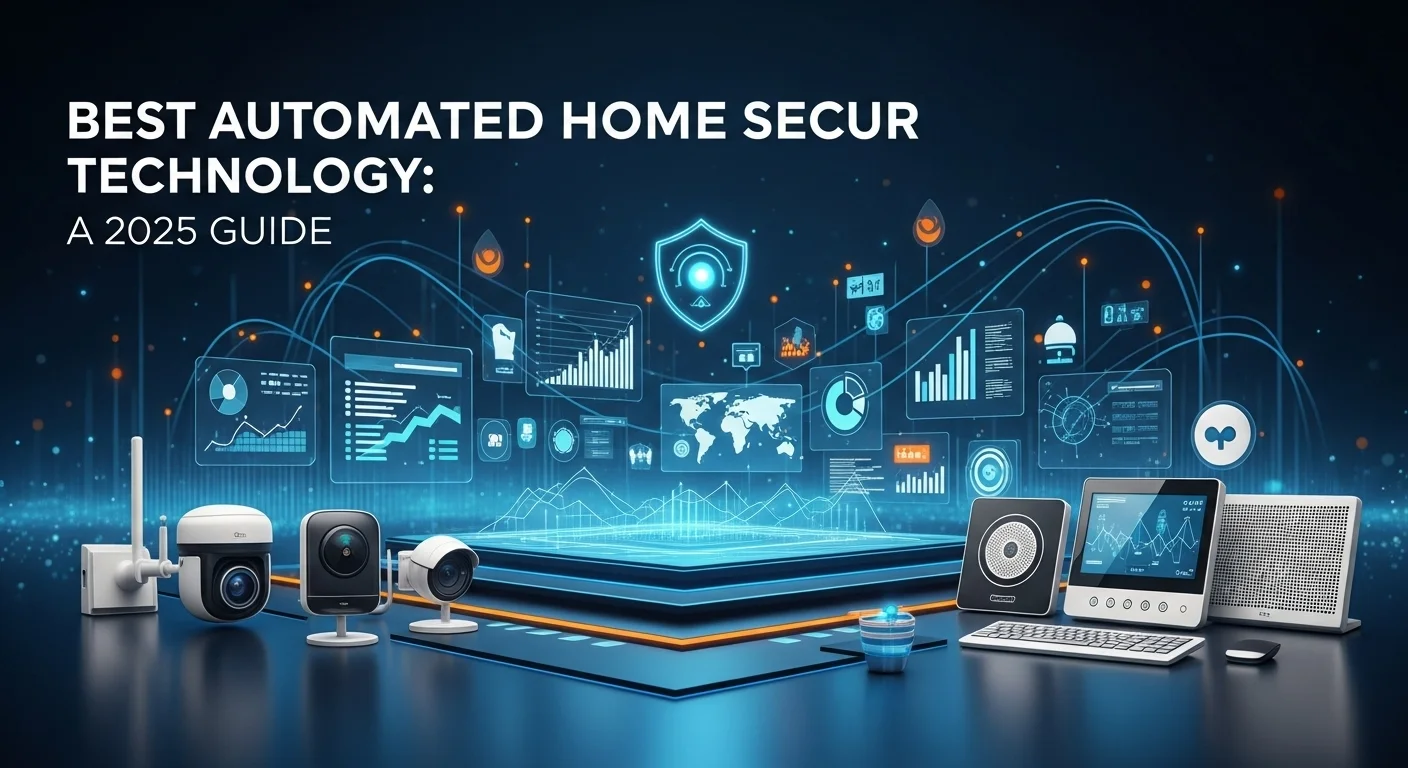The Two Sides of Tech Distribution: A Veteran's Guide to Growth

Executive Summary
For over twenty years, I've watched tech companies either skyrocket or fizzle out. The difference often comes down to one word: 'distribution.' But here's the secret most people miss: it's not one thing, but two. It's how you get your product into your customers' hands (the business deal), and it's how you build your technology to handle millions of users without breaking a sweat (the distributed cloud systems). In this guide, I'll walk you through both sides of this crucial coin. We'll cover everything from smart franchise models that conquer new markets to the distributed cloud systems that power services like Netflix. Get both right, and you're not just building a product; you're building a legacy.
Table of Contents
Table of Contents
What is Distribution and why is it important in Technology?
In all my years working in tech, I've noticed one word that holds the key to growth: 'distribution'. It sounds simple, but it represents two completely different, yet equally vital, pillars of success. On one side, it's about business: the strategy for getting your product into the hands of customers. On the other side, it's about architecture: how you build your technology to be powerful and reliable on a global scale. Mastering just one isn't enough. I've seen brilliant tech fail due to a poor market strategy, and I've seen great marketing wasted on a system that couldn't handle the traffic. To truly succeed, you need to master both. Let's break down these two critical worlds.
The Business Side: Getting Your Product to Market
At its heart, business distribution is about reach. It’s the answer to the question, 'How do we sell this thing?' The methods have changed dramatically over the years, moving from boxes on shelves to clicks in an app store, but the goal is the same: make it easy for people to buy your product.
From Traditional to Digital
I remember the days of complex supply chains: software sold to distributors, who sold to resellers, who then sold to the final customer. It was slow and layered. While that model still has its place for big, complex enterprise systems, the digital world has opened up much faster lanes. Today, platforms like the Apple App Store, Google Play, and cloud marketplaces let companies sell directly to a global audience overnight. It's a game-changer, removing barriers and connecting creators directly with their users.
A Powerful Hybrid: The Distribution Franchise
In this new landscape, one model I've seen work wonders is the distribution franchise. Think of it as a deep partnership. Your company (the franchisor) grants a partner (the franchisee) the exclusive right to sell your products in a specific region. It’s more than just a sales agreement; the franchisee adopts your brand, your marketing playbook, and your operational style. What do you get in return? Their local expertise, their sales force, and their capital. I saw a US cybersecurity firm use this exact model to break into the European market. Their local partner navigated all the tricky regulations like GDPR and cultural nuances far better than a remote US team ever could. It’s a classic win-win: your proven tech, their localized execution.
Getting Specific with a Product Distribution Franchise
A variation on this is the product distribution franchise. Here, instead of your whole business, the partner gets the rights to a specific product line. This is incredibly smart for large companies with diverse offerings. A tech giant might find a partner with deep expertise in manufacturing to distribute their new industrial IoT sensors, while another partner handles their cloud services. You're not just getting a salesperson; you're getting a specialist who truly understands the customer's needs and can provide expert-level service. In a crowded market, that specialized knowledge is often the key to making a sale.
The Technical Side: Building for Resilience and Scale
Now, let's switch gears to the other side of distribution: the technology itself. The days of running a major application on a single, giant server are long gone. It’s too risky and can’t keep up. The modern way is to 'distribute' the work across many computers that act as one seamless system. This is the magic behind almost every large-scale service you use today, from streaming movies to online banking.
The Foundation: Distributed Computing Platforms
This all starts with what we call distributed computing platforms. These are the software tools that let you coordinate work across a cluster of machines. Think of it like a conductor leading an orchestra; each musician plays their part, but the conductor ensures they all work together to create a beautiful piece of music. Technologies like Kubernetes are the modern conductors. They allow you to break down a big application into tiny, independent pieces called microservices. If one piece has a problem, it doesn't take down the whole orchestra. This is how giants like Google and Netflix can serve millions of people at once with incredible reliability.
The Next Level: Distributed Cloud Infrastructure
Cloud computing has evolved. It used to be about accessing resources in a few massive, centralized data centers. But the world needs things to be faster. This has led to the rise of distributed cloud infrastructure. In simple terms, this means the cloud is no longer just 'over there'; it's extending everywhere. Cloud providers can now run their technology stack in multiple locations, including inside a customer's own data center or at the 'edge' of the network, like in a factory or retail store. Why does this matter? Speed. For a smart factory using IoT sensors, you need to process data instantly, not wait for it to travel to a data center hundreds of miles away and back. This model brings the computing power right where the action is.
The Control Panel: The Distributed Cloud Platform
Managing all these scattered pieces would be a nightmare without a central control panel. That’s the job of the distributed cloud platform. It's a unified management system that lets you operate your entire global infrastructure as if it were one single cloud. From one screen, your team can deploy applications, manage security, and monitor performance everywhere—public cloud, private data center, or the edge. This gives you the best of both worlds: the power and automation of the public cloud, with the speed and control of a distributed setup. Platforms like Google Anthos or AWS Outposts make this possible, allowing developers to build an app once and deploy it anywhere. This consistency is what enables true speed and innovation.

A Complete Guide to Distribution in Technology and Business Solutions
Okay, we've covered the 'what' and 'why.' Now, let's get into the 'how.' This is the practical part of the guide where I'll share my experience on how to actually choose and build these distribution solutions. Whether you're a CEO deciding on a market strategy or an engineer designing a system, these are the steps that I've seen lead to real-world success.
A Guide to Implementing Business Distribution Models
Choosing your go-to-market model is one of the most consequential decisions you'll make. It’s not about finding a 'perfect' model, but the right fit for your specific product and goals. Get it right, and you create a powerful engine for growth. Get it wrong, and even the best product can stall.
The Questions I Always Ask: Choosing Your Strategy
When I'm advising a company, I have them answer these questions honestly. It helps clear the fog and point toward the best path:
- How complex is your product? Does it need a lot of hand-holding to sell and set up? If so, you'll need high-touch partners, like those in a distribution franchise. If it's a simple app, direct digital sales are probably the way to go.
- Who is your customer? Selling to giant corporations is a different sport than selling to small businesses. Big companies often require dedicated partners who understand their long buying processes.
- Where is your market? If you're eyeing international expansion, using a local franchise partner can save you a world of headache and capital. They already know the local laws and culture. I've seen companies burn millions trying to do this from afar.
- What are your resources? Building a global sales team is incredibly expensive. Partnering up, for example through a product distribution franchise, lets you leverage your partner's investment to grow faster.
- How fast do you need to move? Tapping into an existing network of partners is almost always faster than building your own sales force from the ground up.
Building a Franchise Program That Actually Works
If you decide a franchise model is the right move, don't take it lightly. A successful program is built on a foundation of trust and mutual success. Here are the non-negotiables:
- Get the Legal Right: I can't stress this enough. The franchise agreement is your foundation. Hire a lawyer who specializes in franchise law. I've seen handshake deals blow up spectacularly. Define territories, fees, and expectations with absolute clarity.
- Train Them Like Your Own: Your franchisees are the face of your brand. They need to be absolute experts. Create a fantastic training program that covers your tech, your sales process, and your company culture.
- Be Their Best Support System: Training is just day one. Give them a dedicated support line, a partner portal with resources, and regular check-ins. When they succeed, you succeed. It's that simple.
- Market Together: Pool your resources. A co-op marketing fund, where you both contribute, allows you to create professional campaigns that are customized for their local market. Empower them, don't just dictate to them.
- Make the Money Make Sense: The financial model has to be fair. Your fees and royalties need to fuel your business, but the franchisee must also have a clear path to strong profitability. A motivated partner is your best asset.
A Guide to Implementing Distributed Technical Architectures
Just as your business needs a plan to reach customers, your tech needs a plan to serve them reliably. Building a distributed system is a serious engineering challenge, but it's essential for any modern application.
The Big Tech Decision: Choosing Your Platform
The core of your distributed app is the platform it runs on. Today, the conversation usually starts with Kubernetes, but it's not the only option:
- Kubernetes (K8s): This is the powerhouse, the industry standard for managing applications at scale. It gives you incredible control and flexibility, but be warned: it has a steep learning curve. Think of it as a professional workshop; you can build anything, but you need to know how to use the tools.
- Serverless: This is the 'easy button.' You just upload your code, and the cloud provider handles everything else—scaling, servers, patching. It's fantastic for services that have spiky traffic, but you give up some control and can get locked into one provider. It's about trading control for convenience.
- Specialized Platforms: For heavy-duty jobs like crunching massive datasets, specialized tools like Apache Spark are often the best choice. They are purpose-built and highly optimized for those specific tasks.
Building a Resilient Distributed Cloud Infrastructure
The goal is to create a seamless web of computing power that's fast and reliable for everyone, everywhere. Here are the key ingredients:
- Content Delivery Networks (CDNs): This is step one. A CDN is a network of servers around the world that stores copies of your static files (images, videos). When a user in Japan visits your site, they get the images from a server in Tokyo, not from your main server in Virginia. It makes a huge difference in load times.
- Edge Computing: This takes the idea of a CDN even further, putting small-scale compute power right at the edge of the network—in a factory, a store, or a cell tower. This is crucial for things that need instant responses, like real-time industrial controls.
- Hybrid and Multi-Cloud: Don't put all your eggs in one basket. A smart distributed cloud infrastructure often uses services from multiple cloud providers (multi-cloud) plus your own private data centers (hybrid). This lets you pick the best tool for each job and avoid being locked into a single vendor.
The Indispensable Role of a Distributed Cloud Platform
How do you manage all this complexity? You can't do it manually. This is where a distributed cloud platform comes in. It's your single pane of glass to manage everything. When choosing one, make sure it has:
- A Unified Control Plane: Can you manage everything—Kubernetes, serverless, VMs—across all locations from one dashboard?
- Consistent Security: It must let you set a security policy once and apply it everywhere. This is critical to avoid dangerous security gaps.
- Application-First Management: It should focus on your application's health, not just the servers. Look for tools that automate deployments and give you deep insight into performance.
- Heavy Automation: The platform should handle the tedious work of provisioning and scaling infrastructure automatically. Manual management at this scale is a recipe for disaster.

Tips and Strategies for Distribution to Improve Your Technology Experience
Once you have your distribution models and platforms in place, the real work begins. This isn't a 'set it and forget it' game. The market and technology are constantly changing. Here are some of the advanced strategies and hard-won lessons I've learned for staying ahead of the curve.
Advanced Strategies for Business Distribution Success
Your partner channels are like a garden; they need constant tending to bear fruit. The focus must shift from setup to optimization and relationship building.
Best Practices for Partner Relationship Management (PRM)
For any channel model, especially a distribution franchise, your partners are an extension of your company. Treat them that way.
- Go Beyond Spreadsheets: Invest in proper PRM software. It centralizes communication, lead sharing, training, and performance tracking. It's as vital for partners as CRM is for customers.
- Form an Advisory Council: I love this strategy. Create a council of your top partners. Meet with them quarterly. Ask for their brutally honest feedback. They are on the front lines and have insights you can't get anywhere else. It also shows you value their expertise.
- Create Tiers that Motivate: A tiered program (e.g., Silver, Gold, Platinum) is a powerful incentive. Reward higher performance and commitment with better margins, dedicated support, and co-marketing funds. It gives partners something to strive for.
- Solve Channel Conflict Immediately: Nothing kills a partner relationship faster than competing against your own direct sales team for a deal. Have crystal-clear rules of engagement and a deal registration system. When conflicts happen—and they will—address them quickly and fairly.
Data-Driven Decisions and Legal Peace of Mind
Your gut is good, but data is better. Track the performance of every channel and partner. Where is your best ROI? Where are the untapped opportunities? For a product distribution franchise, use sales data to help your partners manage inventory effectively. Help them win.
And please, do your legal homework, especially with franchise models. The laws are complex and vary everywhere. Ensure your disclosure documents are perfect and your agreements protect your brand while being fair to your partners. It's an investment that prevents thousand-dollar problems from becoming million-dollar lawsuits.
Advanced Strategies for Technical Distribution Excellence
On the tech side, the mission is to build a system that is not just reliable, but also fast, secure, and cost-effective. This requires a culture of excellence and a proactive mindset.
Optimizing for Performance, Resilience, and Cost
In a distributed cloud infrastructure, performance isn't just about server speed; it's about the user's perception of speed.
- Master Your Caching: Go beyond a basic CDN. Use multiple layers of caching—at the edge, in the application, at the database. Use smart load balancing to always send users to the fastest, healthiest data center.
- Practice for Disaster with Chaos Engineering: The best way to know if your system is resilient is to try and break it yourself. This is what 'Chaos Engineering' is all about. You intentionally inject small, controlled failures into your live system—like slowing down the network or shutting down a server—to find weaknesses before they cause a real outage. It’s like a fire drill for your application.
- Embrace FinOps to Control Costs: The cloud is like a utility; if you leave all the lights on, you will get a shocking bill. FinOps is the practice of bringing financial accountability to your cloud spending. This means actively hunting for waste, right-sizing servers, and using automation to shut down idle resources.
Fortifying Security and Operations
A distributed system has more doors and windows, which means you have to be extra vigilant about security.
- Adopt a 'Zero Trust' Mindset: The old idea of a secure network perimeter is dead. In a modern system, you must assume no one is trusted by default. Every single request, whether from inside or outside your network, must be verified. This is the core principle of a Zero Trust architecture.
- Automate Your Compliance: You can't manually check thousands of components for compliance. Use policy-as-code tools to automatically enforce your security rules. For example, you can write a rule that prevents any new database from being created without encryption turned on.
- Run Your Operations with GitOps: This is a game-changer for operations. GitOps uses a Git repository as the single source of truth for your entire system's configuration. Your team declares the desired state in code, and automated agents make sure the live system matches it. It creates a perfect audit trail and makes managing complexity much safer.
The Future of Distribution: What I'm Watching
The ground is already shifting for the next evolution of distribution. Here’s what I’m telling my clients to prepare for.
- Artificial Intelligence (AI) is Changing Everything: AI will revolutionize both sides of distribution. In business, it will enable hyper-personalized marketing and incredibly accurate demand forecasting. Imagine an AI telling your product distribution franchise partners exactly what to stock next week. On the tech side, AIOps (AI for IT Operations) will be necessary to manage the complexity of future systems, automatically detecting problems and even healing the system on its own.
- Web3 and True Decentralization: Technologies like blockchain are the ultimate distributed systems—no single company controls them. While it's still early days for most businesses, the ideas behind Web3 could lead to radically new, decentralized ways of distributing products and services.
- The Edge is the New Cloud: The explosion of IoT devices, autonomous cars, and augmented reality will continue to pull the distributed cloud infrastructure out to the very edge. The future isn't a handful of data centers; it's a dense mesh of computing power in every factory, car, and home. Managing this hyper-distributed world will be the next great challenge for our platforms.
In the end, mastering distribution is a continuous journey. By building strong partnerships and using data to guide your business strategy, and by focusing relentlessly on performance, security, and resilience in your technology, you can build a formidable competitive advantage. Keep an eye on the future, because the next wave of innovation is right around the corner.
Expert Reviews & Testimonials
Sarah Johnson, Business Owner ⭐⭐⭐
As a business owner, I found this insightful. I would have loved a few more real-world examples to sink my teeth into, but the core info is solid.
Mike Chen, IT Consultant ⭐⭐⭐⭐
This was a really helpful breakdown of distribution. It clarified a lot for me, though a couple of the tech concepts could be a touch simpler for non-specialists.
Emma Davis, Tech Expert ⭐⭐⭐⭐⭐
An absolutely fantastic article! It's one of the most comprehensive guides on tech distribution I've come across. It was perfect for my specialization work. I understood everything clearly.



